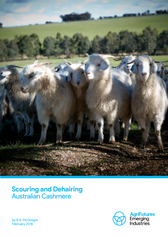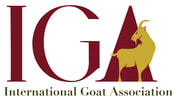 IGA Regional Director for Mexico, Caribbean & Central America Hector received a Master of Science (MSc) in Ruminant Nutrition from the National Autonomous University of Mexico (Universidad Nacional Autónoma de Mexico – UNAM) and a Doctoral degree (PhD) in Veterinary Medicine with a concentration in Ruminant Nutrition from the University of Murcia, Spain. Since 1985, he has been working as Professor-Investigator at the Autonomous University of Queretaro (Universidad Autónoma de Querétaro – UAQ), and is presently serving as Coordinator of the University Campus and Agricultural Research and Teaching Center of the Faculty of Natural Sciences.
0 Comments
 IGA Country Representative for Sweden Ylva is an associate state veterinarian in ruminant diseases at the National Veterinary Institute (SVA) of Sweden, a governmental agency with expert authority on infectious diseases in animals. As part of her duties, Ylva is responsible for the goat activities at SVA, which include doing research, communicating with goat veterinarians and farmers, arranging workshops and training for goat associations, farmers, and veterinarians. Ylva’s focuses her research on udder health in dairy goats. Ylva graduated as a veterinarian in 1997 and obtained her Ph.D. in bull fertility the same year. SVA has employed Ylva since 2007. Want to learn more about our other Country Representatives? Click here.  IGA Regional Director for Eastern Europe Dr. Bagnicka works for the Polish Academy of Sciences in their Institute of Genetics and Animal Breeding. Her research areas include quantitative genetics, transcriptomics, epigenetics, and milk quality. Before becoming a Regional Director, Emilia served as the IGA Country Representative for Poland. Emilia was the first person in Poland to estimate the genetic parameters and breeding values of production traits. She was also one of the first in the world, and the first in Poland, to estimate genetic parameters of functional traits in the Polish goat population.  IGA Country Representative for Brazil Dr. Livio M. Costa-Junior graduated in Veterinary Medicine from the University of Maranhão, Brazil and obtained a Ph.D. in Parasitology from the Federal University of Minas Gerais, Brazil, with a collaborative period in Ludwig-Maximilians-Universität München, Germany. He has been studying natural products to control goat gastrointestinal nematodes for the last 12 years. He has been an academic advisor of several Ph.D. and Master’s theses focusing on different nutraceuticals plants to control gastrointestinal goat nematodes. Want to learn more about our other Country Representatives? Click here. Written by Emilia Bagnicka, IGA Regional Director for Eastern Europe
Institute of Genetics and Animal Breeding, Polish Academy of Sciences in Jastrzebiec, Poland I attended two conferences as IGA Country Representative* in 2017. The Newsletter of the E (Kika) de la Garza American Institute for Goat Research Cooperative Extension Program, Langston University
Production loss has many facets. According to the USDA/APHIS NAHMS report entitled "Goat and Kid Predator and Nonpredator Death Loss in the United States, 2015", by the way Mr. Branan is associated with this USDA program, about 500,000 adult and kid goats were lost to all causes (nonpredator and predator) in 2015, which represented 10% of U.S. adult goat inventory and 20% of kids born in 2015. The total value of goat and kid losses was $70 million. Texas had the largest inventory of goats and also had the highest percentage of losses: 36% of U.S. adult goat deaths and 38 % of kid deaths. Nonpredator causes accounted for about three-fourths of all adult goat and kid death losses in the U.S. in 2015. Of known losses due to nonpredator causes, internal parasites were the primary cause, resulting in almost 87,000 goat and kid deaths in 2015. For 2015 death losses due to predators, coyotes and dogs accounted for the highest percentages of goat and kid death losses in 2015. Overall, coyotes and dogs accounted for almost 80,000 goat and kid deaths, or about 65% of all losses due to predators.
 Download the PDF Download the PDF Bruce McGregor, IGA member and former IGA Board member Australia’s rural industries make a fundamental contribution to the Australian economy and way of life Australia’s rural industries make a fundamental contribution to the Australian economy and way of life. In addition to the major industries, numerous new and emerging rural industries bring opportunity, diversity and resilience to rural Australia. The long-term sustainability of the rare natural animal fibre industries is of considerable importance both to the production industries and for economic and social benefits generated by value-adding processing of rare animal fibres in Australia. As these are new industries in Australia, there is substantial scope to improve production efficiency, fibre quality and value adding of these fibres. To assist the development of these new industries this project focussed on two main issues:
About the Author
As a Research Scientist, Dr. Bruce McGregor B.Agr.Sc. (Hons), Ph.D., Advanced Cert. Textile Technology, has focussed on improving the production, fibre quality, processing and comfort properties of rare natural animal fibres including superfine wool, cashmere, mohair and alpaca. This led to Ph.D. studies on the quality of cashmere and its influence on textile materials produced from cashmere and blends with different qualities of superfine wool. Recently he was Program Leader of the Wool Comfort research conducted by the CRC for Sheep Industry Innovation. He has published over 150 scientific research papers plus numerous technical bulletins and advisory publications. Bruce has travelled widely to countries that produce rare natural animal fibres so he could understand the environmental, social and technological conditions in these regions. He has published a number of other reports that are available on the AgriFutures website READ MORE... PROGRAMA IX FORO NACIONAL CAPRINO Córdoba, 4 y 5 de abril de 2018 “Juntos y con fuerza haciendo camino”  MIÉRCOLES 4 DE ABRIL DE 2018 09:00 h. Recogida de documentación. 10:00 h. Inauguración. Representante de Diputación de Córdoba; Presidente de Cabrandalucía; Representante de la Junta de Andalucía; Representante del Ministerio de Agricultura y Pesca, Alimentación y Medio Ambiente. 10:30 h. “Evolución del control lechero y de los programas de mejora genética de las razas caprinas en Andalucía” Dª. Dolores López, Secretaria ejecutiva de ACRIFLOR y representante de Cabrandalucía. 10:45 h. CONFERENCIA INAUGURAL: “La leche de cabra en la dieta mediterránea: beneficios nutricionales” Dra. Mª José Muñoz Alférez, Dpto. de Fisiología, Universidad de Granada. 11:30 h. Café. Módulo 1: PRODUCCIÓN CAPRINA OBJETIVOS: La alimentación es uno de los pilares de la ganadería caprina. Una buena alimentación es la base de una buena producción, pero no siempre las raciones que consumen nuestros animales tienen una composición adecuada y no siempre hacemos el mejor uso de las materias primas que tenemos a nuestra disposición. La eficiencia energética, el uso adecuado de forrajes y subproductos o incluso las posibilidades que nos ofrece la alimentación para modificar la composición final de la leche, son algunas de las cuestiones que pretendemos tratar en esta mesa. Más... |
IGA Blog
The International Goat Association promotes goat research and development for the benefit of humankind, to alleviate poverty, to promote prosperity and to improve the quality of life. Archives
May 2024
Categories
All
|
|
International Goat Association
2516 Millbrook Rd., Little Rock, AR72227 USA email: [email protected] -454-1641 |


 RSS Feed
RSS Feed